What Kind Of Animals Are Best Suited To Life In A Desert
Disclosure: This mail service may comprise affiliate links, pregnant I get a commission if you decide to purchase through my links, at no cost to you lot. As an Amazon Associate, I earn from qualifying purchases. Read the full disclosure hither.
Desert Animals
The desert is home to a wide variety of impressive and varying creatures. From mammals to insects, reptiles and birds, and everything in between, the natural ecosystem preserved in desert environments is fascinating.
Desert animals are able to strike a delicate balance between the hunter and hunted, carnivores and herbivores, without entirely throwing off the balance of other creatures inside the desert.
Many desert-abode creatures are versatile and easily adaptable. Found in many climates, the harsh weather condition of the desert seemingly practice not stage them. Likewise, many birds (cheque out our bird games) mentioned beneath choose to migrate to the desert during the winter or have otherwise establish unique ways to live in sparse water habitats within the desert.
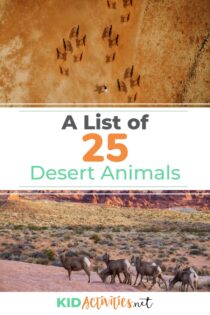
Others prefer to movement and graze, on the run from whatsoever natural predators choosing to stalk them. Some burrow below the sand and spend the bulk of their lives this way.
Animals that live in the desert come up in a wide variety of varying creatures but accept one thing in common. They accept found ways to adjust to the desert heat. What'south more than, they mostly enjoy their lives away from human beings.
Some animals, like bats and dingos, are considered to be shy. While they may exist plant in human-populated areas, it is mostly in search of food. These animals are so versatile, you'll have to read about them yourself!
Animals That Live in the Desert
one. Armadillo
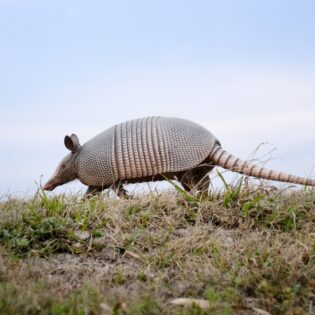
In Castilian, Armadillo means "little armored ane." This is true of the armadillo, a small mammal with a shell entirely unique to this animate being.
The armadillo nutrition consists mostly of bugs, small reptiles, plants, and fruit.
What Makes the Desert a Prime Location for the Armadillo?
Similar many animals that live in the desert, armadillos dear warm climates. Their low trunk fatty percentage, coupled with their naturally low body temperature means armadillos face the possibility of expiry in colder environments.
They also love to dig burrows to bury themselves in and spend near of their 24-hour interval sleeping, making the desert sands their ideal napping spot.
2. Coyotes
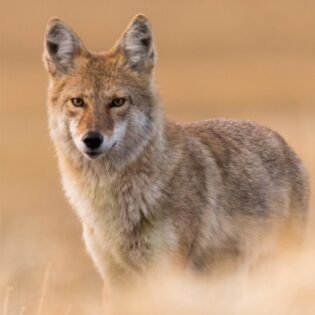
Physically, coyotes have a very similar appearance to pocket-size dogs, making them easily mistaken for the domesticated creature in the wild.
In reality, the coyote is an experienced and dangerous hunter, moving in packs to chase prey. They are said to "sing" to their pack mates in order to communicate their location through their howls.
What Makes the Desert a Prime Location for Coyotes?
Coyotes are hands able to accommodate to many different climates, the desert being one of them. Because their diet ranges from small rodents and mammals to reptiles, fish, birds, and more, the coyote is able to observe plenty of prey within the desert.
The open plains of the desert, coupled with sparse vegetation for embrace, provides the coyote with the perfect hunting conditions to stalk down casualty.
iii. Giraffe
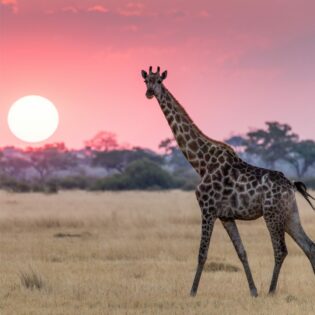
These gentle giants typically graze due south of the Sahara Desert. Giraffes typically spend most of their days grazing for nutrient. They mostly live off of Acacia leaves and require at least 10 gallons of water a mean solar day in social club to survive. Because of this, giraffes mostly graze in loose formations, their entire herd spreading out across the savannah desert.
What Makes the Desert a Prime Location for Giraffes?
Most of the giraffe's diet consists of Acacia leaves, which has contributed to their adjusted, elongated necks fabricated for reaching the tops of trees.
The rainy climate of the savannah allows the giraffe to thrive, along with the Acacia leaves that make upwards a majority of their diet.
4. Dingo
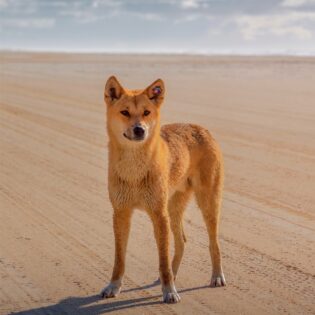
Unlike coyotes and other animals, Dingos are able to chase either in packs or lone. The elusive animal is even more than dog-like in appearance than the coyote, and their hunting habits tend to be more opportunistic. Dingos in Asia are fifty-fifty known to forage from humans!
What Makes the Desert a Prime Location for Dingos?
Dingos can be described equally elusive, and tend to like more than sparsely populated areas such as the desert considering of this. They can easily arrange to whatsoever climate, just as long as they have food, h2o, and shelter. Some Australian sheepherders petitioned for a "dingo contend" to be built in the late 1800s, finer isolating them from some more lush parts of Australia.
5. Wild Horses
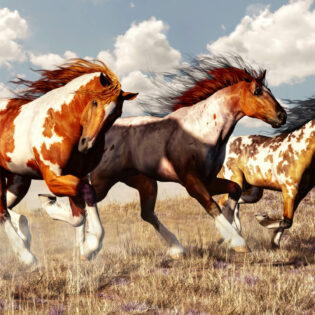
In America, wild horses have existed for millions of years. They are a part of the rich history of the Americas, from Native Americans to cowboy legends. Today, wild horses however roam complimentary in the W, upholding the legend of the area.
What Makes the Desert a Prime Location for Wild Horses?
Horses must graze on grass and other plants in order to survive, equally well every bit frequent water holes to stay hydrated. Wild horses are able to avoid harsh and dangerous slopes, preferring instead to stay on even ground.
half-dozen. Mountain Panthera leo
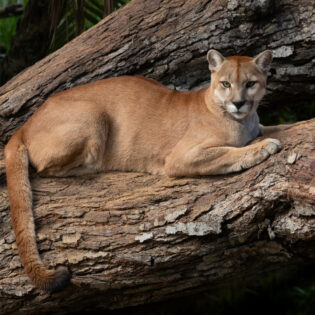
Mountain lions are largely nocturnal and predatorial. These are fast animals, preferring to ambush their prey utilizing bursts of speed to catch them off-guard and unable to defend themselves.
What Makes the Desert a Prime number Location for Mountain Lions?
Mountain lions are adaptable to several different climates, and the desert is no different. They are able to use their tails in club to catch prey like deer and antelope, making desert denizens no problem for the mountain lion.
7. Bats
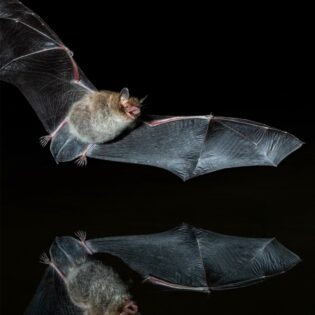
Different bats bask coming out at dissimilar times of mean solar day, with several types of bats emerging the solar day while others adopt sunset, dawn, or nighttime. Many breeds of bats could be considered animals that hibernates, making them hard to spot in the wild entirely depending on the time of day and year you are looking for them.
What Makes the Desert a Prime Location for Bats?
Bats enjoy habitats far abroad from humans, making the desert shut to platonic for them. They also mostly feed on insects and vegetation, easily establish in the desert.
Several types of bats merely require brief passage over modest lakes or ponds in lodge to quench their thirst.
8. Camels
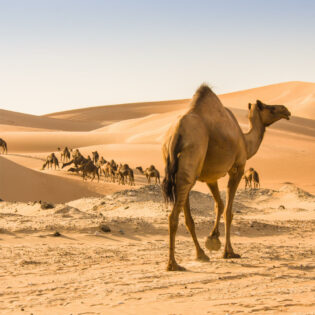
Famous for their humps, camels employ them to store fat which can be broken downwards into drinking water. Camels are infamous every bit desert animals able to absorb amazing amounts of water in a short corporeality of time; upward to xxx gallons in 13 minutes!
What Makes the Desert a Prime number Location for Camels?
Because camels are so good at storing water, they are able to survive long periods of time without rejuvenating. Likewise, they are able to survive extreme desert conditions and oestrus without sweating and losing water.
9. Jackrabbits
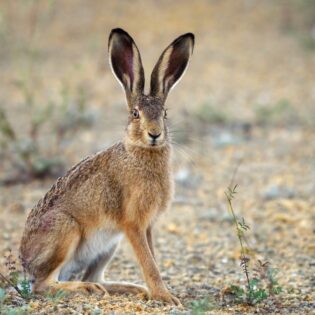
Jackrabbits come in both black-tailed and white-tailed varieties and are sometimes hands dislocated with one another. 1 need but check the underside of the rabbit's tail in order to differentiate between the two.
What Makes the Desert a Prime Location for Jackrabbits?
Equally hares are vegetarians, they are able to survive off of a few varieties of brush and wild vegetation. White-tailed jackrabbits enjoy the wide, open plains the desert has to offering them.
10. Spiny Mouse
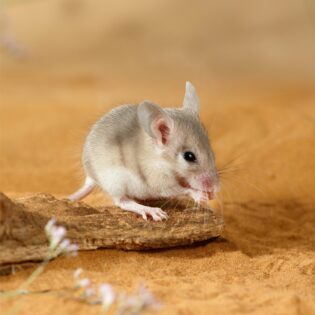
While the spiny mouse appears to exist similar to a mouse in both appearance and name, the sping mouse is actually genetically closer to a gerbil, confounding scientists.
What Makes the Desert a Prime Location for the Spiny Mouse?
The spiny mouse is an omnivore, despite its small stature. The spiny mouse can survive off of small insects and plants alike. They favor arid climates, making the desert ane of their most platonic living spaces.
eleven. Wolves

The desert wolf is one of the basest predators – a true carnivore, and a relative of domesticated canines! The wolf is truly the prototype of the hunter beast and predator, choosing to chase down larger prey in packs.
What Makes the Desert a Prime Location for Wolves?
The desert provides a wide variety of large prey for desert wolves working together in packs. Led past the pack's blastoff, wolves are able to successfully hunt and prey upon larger desert animals.
12. Black Bears

While these impressive creatures mainly stick to forest environments, they may be found in canyons during the summer and fall. Otherwise, they typically lightly hibernate during the winter and wouldn't likely exist found in the desert.
Oddly, in direct opposition to their name, non all blackness bears are black. They can widely vary in color and appearance.
What Makes the Desert a Prime number Location for Black Bears?
Black bears have a wide and varied diet and are not picky eaters. Desert offerings of insects, grasses, roots, insects, and anything in betwixt are enough to sustain a black carry, although they aren't ones to plough their noses up at small desert prey.
13. Zebras

Zebras found in the desert are typically larger than their relatives in other regions. These zebras accept amazing vision, with impressive sight both day and night.
What Makes the Desert a Prime Location for Zebras?
Zebras are built for desert survival. They generally forage during the twenty-four hour period, spending most of their waking hours ingesting what grasses and more they are able to uncover. Zebras readily drink h2o that is available to them but is able to survive days without water.
What's more, these desert zebras are able to employ their hooves to dig into the desert sand and dry out river beds to find hidden sources of water in dire times of need.
fourteen. Cooper's Militarist

This bird of prey means serious business. While majestic to behold, this hawk is non easily approachable. A migratory bird, they are able to be located within the unabridged continental United states but are more often than not found in deserts to the w.
With an impressive wingspan of up to 36 inches in females, the Cooper'south Hawk is a bird to behold when coming beyond it in person.
What Makes the Desert a Prime Location for the Cooper's Hawk?
Cooper'southward Hawks prefer to nest in desert cottonwood copse at a loftier superlative. The birds may also cull to nest in sycamores and oaks, but their nests largely remain the same. The hawk tends to remain nested and hunt when it is opportunistic for them, as truthful predators do.
15. Bluish Heron
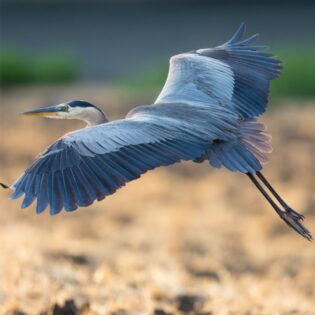
While the blue heron may seem purple and stately, they are really fiercely territorial and unafraid to defend themselves. These birds are both loud and exact, using their caws to bulldoze away would-be predators and homo visitors alike.
What Makes the Desert a Prime Location for the Blue Heron?
While these herons exist across the United States, they tend to nest near to any available h2o. Although h2o may exist thin in certain desert regions, the blue heron is likely to find the water region that best suits their needs and bulldoze away whatsoever potential predators.
16. Ostrich
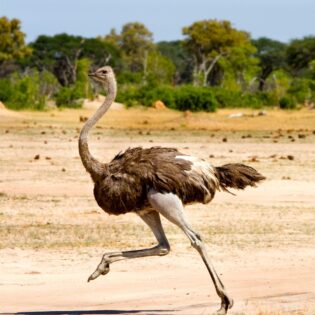
These flightless, ii-legged birds may be the source of consternation from many. In actuality, the ostrich is able to merits the title of the fastest two-legged bird. Males of the species can grow up to a whopping 350 pounds – one most likely wouldn't desire to be chased downwardly by an ostrich in a bad mood!
What Makes the Desert a Prime number Location for the Ostrich?
While the desert is rife with natural predators to the ostrich, their speed allows them to outrun them hands. Their legs are more than fast. In some cases, they can be lethal. In some cases, ostriches accept been known to take downwardly even a panthera leo with their powerful legs.
An omnivore, the ostrich pretty much eats whatever information technology can find in the environs around it, making it easily adjustable to desert life.
17. Plains Bison
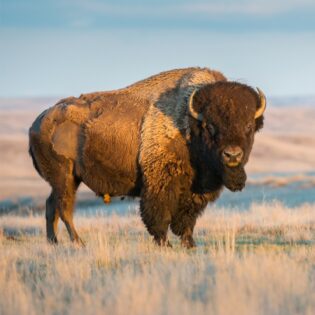
These bison are sturdy. Having lived through the Ice Age and more than, they are truly remarkable creatures to behold – as if even beholding such an aboriginal creature isn't impressive enough. They weigh upward to 2000 pounds, and like the previously mentioned ostrich, run up to twoscore miles per hour.
What Makes the Desert a Prime Location for the Plains Bison?
Plains bison drift and motility around intuitively in order to avert over-grazing. The desert's thin vegetation provides the perfect grazing habitat to the plains bison, as they don't have to worry about moving as well much, too often.
18. Groovy Horned Owl
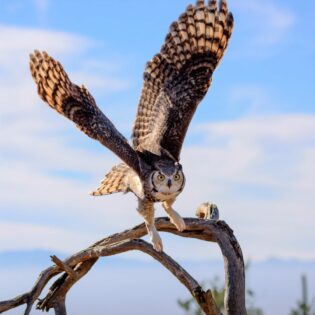
Like many owls, the great horned owl hibernates during the day. At night, their superior eyesight allows them to survive in the nighttime. Coupled with their impressive hearing, great horned owls easily avert predators. Impressive themselves, they are able to wing noiselessly and hunt prey during the nighttime.
What Makes the Desert a Prime Location for the Bang-up Horned Owl?
Great horned owls exist across the continental United States only tend to migrate south like many birds during the winter. Great horned owls are amend suited to the arid weather than the cold.
nineteen. Loon
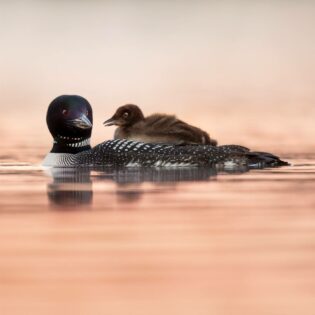
The loon is a forager and frequently dives underwater in order to await for prey. Able to open their eyes while underwater and scan for their side by side potential meal, the desert loon is a sight to behold when engaging in its natural predatory beliefs.
What Makes the Desert a Prime Location for the Loon?
While many loons make their home in rivers and larger bodies of water, they are happily able to brand themselves at home in shallow bodies of h2o provided they have enough shade and fish to feed on.
20. Snowy Egret

The snowy egret is a please to behold. These egrets truly bask showing off what natural dazzler and majesty they take. Natural entertainers, their natural curvatures and movements are carefully calculated.
What Makes the Desert a Prime Location for the Snowy Egret?
During the off-breeding season, the snowy egret is not particularly picky well-nigh where it makes its nest. What'south more, they are naturally diverse in their eating habits. A snowy egret volition consume merely nearly anything it has to in order to survive, making it well suited to the unpredictability of desert climates.
21. Ospreys
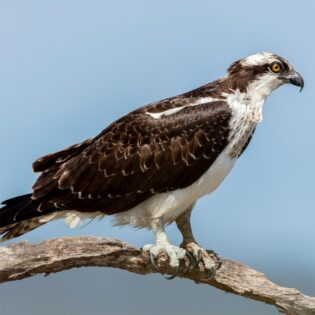
The osprey is highly elusive. The bird spends an impressive amount of its lifetime in flight, changing habits often and in an adjustable fashion. Considering they are so well-traveled, ospreys are not often picky about where they make their nests, sometimes even making their nests on the ground when they are not immediately threatened by casualty.
What Makes the Desert a Prime Location for Ospreys?
Their adaptability makes them well-suited to many climates. Because they volition probable exist moving on anyway, many ospreys spend their time in the desert without settling down for long.
Like many aforementioned desert birds, their diets are versatile and well-suited to desert areas.
22. Gila Monster
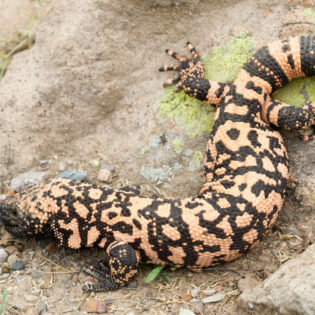
These poisonous lizards are ready to defend themselves against predators merely rarely testify to be lethal to humans. They are, however, hands able to fend off potential predators.
What Makes the Desert a Prime Location for the Gila Monster?
Gila monsters enjoy the shrubs and arid climate establish in the desert, besides equally burrowing. Gila monsters volition adopt another brute'south burrow to suit them or dig themselves into holes in the sand.
Gila monsters feed on smaller animals in the summer and store excess fat for usage in the winter.
23. Male monarch Cobra
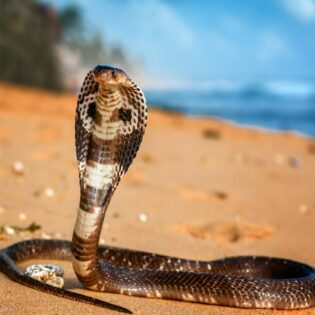
This snake is highly venomous and earns its royal title in this fashion. Slithering gracefully across the desert, one does not want to mess with this anointed and impressive predator.
What Makes the Desert a Prime number Location for the King Cobra?
Male monarch Cobras bask inhabiting small-scale bodies of water in the deserts of southeast Asia, preying upon smaller snakes. In this habitat, the King Cobra probable faces no natural predators. While their eggs may prove to be vulnerable, a fully grown cobra can intimidate almost any other creature with which it comes into contact within the desert.
24. Desert Tortoise
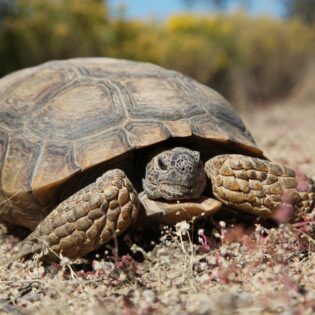
These desert tortoises are distantly related to state-dwelling turtles. These domed relatives are unable to swim, instead designed for life on land and below it.
What Makes the Desert a Prime Location for the Desert Tortoise?
Desert tortoises are able to alive in temperatures over 140 degrees Fahrenheit considering they are able to dig themselves under the sand to hands escape the rut. In fact, the desert tortoise spends a majority of its life under the sand.
25. Scorpions
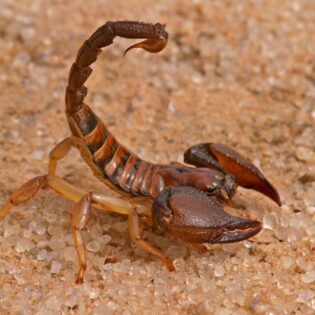
Yet another poisonous desert creature, the scorpion is typically non poisonous enough to evidence to be lethal to human being beings. Crablike, these invertebrates possess pincers and stingers with which they are able to defend themselves from natural predators.
What Makes the Desert a Prime Location for Scorpions?
Scorpions prefer climates that are dry out and warm, thriving in southern desert climates of the United States. They are naturally nocturnal and able to spend a majority of their time burrowed under the sand. Easily adjustable, the scorpion has adapted to numerous climates and plant a way to thrive.
Decision
The desert is home to such a broad variety of animals i would be hard-pressed to discover a defining characteristic of them all. Deserts around the world vary in the types of animals they offer. However, it is certain that as a visitor, you will be sure to easily notice a species or two that will impress you lot if you decide to take a trip out to the desert yourself!
Want some more than corking animal manufactures? Check out our animal-themed games and our postal service on animals that start with the letter Northward.
References:
DesertUSA.com
Nationalgeographic.com
Onekindplanet.org
Source: https://kidactivities.net/animals-that-live-in-the-desert/
Posted by: readingharays.blogspot.com

0 Response to "What Kind Of Animals Are Best Suited To Life In A Desert"
Post a Comment